Mory Sacko poses in his new restaurant, Lafayette, located in the former palace of the Marquis of La Fayette, a French aristocrat, soldier and politician who was instrumental in the American and French revolutions. The Pompadour Hall is decorated with a contemporary work by Hans Hartung and the work Give me quality, coming from the Kraemer gallery. In the center, lamp designed by Lázaro Rosa-Violán.
In 2020, the name of a restaurant began to circulate among Parisian gourmets: Mosuke, accompanied by the name of its creator, Mory Sacko, and his age, 27 years, and his origins, Senegal and Mali, which crossed the essence of their dishes. Months later, Mosuke received a Michelin star. When it was impossible to eat there without a reservation for seven months, Mory Sacko (Champigny-sur-Marne, France, 31 years old) began to be a regular on the France Info radio network and on the television program Cuisine Ouverte. His self-confidence, his six-foot-eight-something, his ability to harmonize the French-African tradition with the Japanese, his extraordinary friendliness and his contagious smile were heard over the airwaves and seen on the screen with such naturalness that he got into it all. the city in your pocket. In 2022 he opened Mosugo, more affordable and spontaneous, at the center of which was fried chicken in different versions, with its corresponding nods to Africa, a pure connection with young people, which gave it even greater visibility. And last September the magazine time dedicated its cover to him, an honor that only two French chefs had received to date: Michel Guérard, in 1974, and Alain Ducasse, in 2001.
Considered a model of an entrepreneur, his is the story of an authentic creative climb. The seventh of nine children, he grew up on the outskirts of Paris with a Malian father who worked in construction and a Senegalese mother who worked as a housekeeper. His interest in cooking arose from the boisterous dinners that gathered nine children around his mother's hot and spicy food. Those dishes that survived from generation to generation orally are the basis of Sacko's cuisine, a French cuisine with two references as opposite as Japan and Senegal.
At the height of its popularity comes the turn of Lafayette, located on Rue d'Anjou, next to the Madeleine. He is accompanied on the adventure by the hospitality businessman Benjamin Patou (ideologist and promoter) and the designer and interior designer Lázaro Rosa-Violán. As if that were not enough, the restaurant is located in the private hotel which was inhabited by the Marquis of La Fayette, a French aristocrat, soldier and politician who was instrumental in the American and French revolutions. He fought in the American War of Independence with such determination that he was George Washington's trusted general. The storming of the Bastille coincided with his return to Paris. Too soft for the Jacobins and too revolutionary for the monarchists. The rebel marquis helped organize the July 14 festival in honor of the revolution in 1790, swore fidelity to the nation, wrote to a friend his famous “I reign in Paris” and feeling like an exemplary Parisian, he returned to his palace to celebrate.
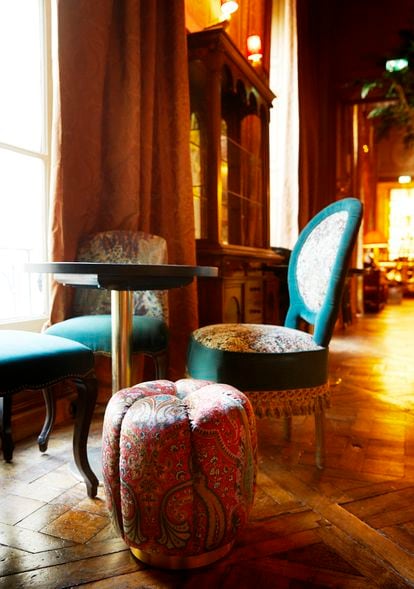
In that same mansion the Lafayette restaurant has just opened and, as a symbol of today's France, Mory Sacko arrives. Her body expression, her outfit and her smile convey an incontestable optimism. Three hundred years old and 100 diners a night await her creativity. She trained in haute cuisine with masters such as Thierry Marx. He is the first chef of Senegalese origin – those are the roots that mark his cuisine above all – with a Michelin star. Responsibility, pride, pleasure are concepts present in his daily life: “Pride because it is pleasant to celebrate my French identity along with my African origins and my Japanese passion — which entered my life through the manga characters and which is absolutely contrary. to my mother's kitchen, raw fish? Cold rice? She tells me: 'Can you eat that?'—and at the same time it is a responsibility because behind the kitchen there is a cultural ambassador and we must respect it.”

Between conquests and expectations, Sacko acknowledges: “I could never have imagined this impact, I just wanted to open a restaurant and have fun. I am not the typical cook who made cakes with his grandmother as a child; Until I was 15 I don't remember entering a k
itchen…, and if I did, my mother would kick me out…”, one of the few routines that survive in the life of Sacko, who, with his permanent smile, admits that his mother follows him sending: “She is very classic, she doesn't trust, but the pride they feel is immense.”
Sacko has achieved so much in such a short time that one wonders if it was necessary to embark on such an ambitious project: “Yes, because I need to get away from what I know. Mosuke is introspective, with Lafayette I can open myself to the outside. The emotion is conveyed in another way: this is Parisian bistro inspiration and African inspiration. There are totems of African gastronomy such as stewed rooster with mafé sauce or fermented cassava soup with fish, and also American inspiration in homage to Lafayette reflected in the salted gaufre with lobster.”
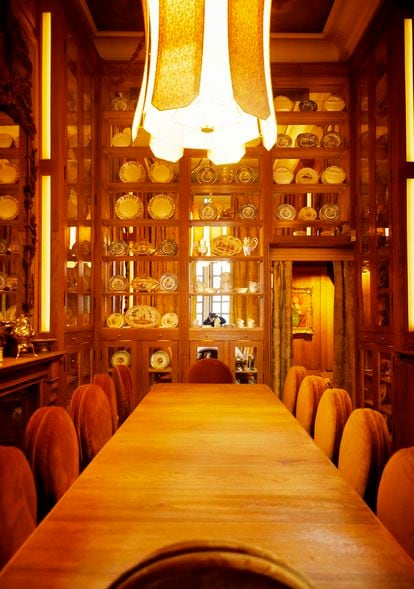
The vitalism that accompanies him from the past and his permanent curiosity about the future make Sacko mention the importance of memory in gastronomy. “I honor a continent, but more specifically I honor the memory of my mother, a woman who was born in the Ivory Coast, who went to Mali, who grew up in Senegal… the pleasure that I seek is hers, and that is why I intend share the emotion that I have known in their dishes.”
Who is also looking for something among the tables, flowers and cables is the celebrated interior designer Lázaro Rosa-Violán (Tangier, 1965), who greets while putting the finishing touches to the set-up with his partner, the fashion designer Mariano Moreno. Walking next to it, you discover mirrors that encourage the spread of mischief, embroidered fabrics, Angora wool, a clock from La Fayette's time, sanctum curtains, upholstery with French connotations and a warm atmosphere flamboyant.
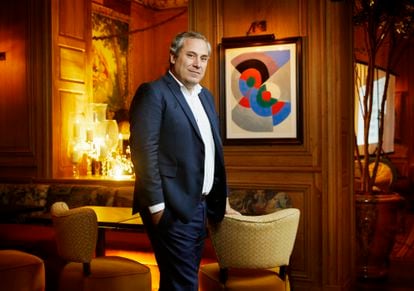
The natural treatment of things makes you feel like you've stepped into a Fragonard scene. It doesn't have to be easy to recreate a universe this exuberant with so much truth: “It was necessary to connect those two worlds, that of Mory's cuisine, so exotic, and that of overseas France and La Fayette,” says the designer. Rooms with names like Pompadour, Salle d'Armes or the cupboard itself speak of a romanticism sprinkled with contemporary brushstrokes. “I seek to recreate a classic by experimenting with chromaticism. “There are paintings from Benjamin Patou’s private collection along with classic pieces from the Kraemer gallery.” Rosa-Violán has specifically created the macaroon chair, the cannelé chair and the medallion chair. “The important thing is to create a unique experience. Exotic doesn't have to be tropical. “I didn't want to be literal when recreating the 18th century, I wanted the essence.” Both the lamps designed by him and the candles (each one in his own lantern) reveal the importance that Lázaro gives to lighting and a phrase reappears that seems to haunt him: “Yes, a well-lit garage is better than a palace with fluorescent lights.” ”.
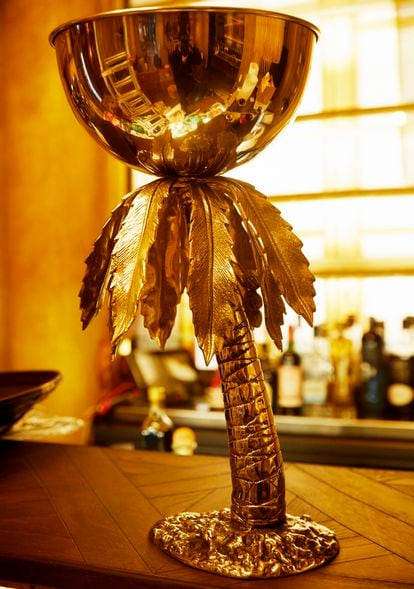
Illuminated by the spotlights and the shots of the photographs being taken of Mory Sacko, Benjamin Patou (Boulogne-Billancourt, 46 years old) appears, greeting here and there. When he understands that the gibberish is due to the instructions that the front-of-house te
am receives, he turns around and asks: “What, kids, what does it feel like to work in the best restaurant in the world?” And he laughs so heartily. . Patou does not hide the pride he takes in being the orchestra director of a project like this. He is charismatic, and he knows it. With a keen sense of hospitality he has built an empire with 40 restaurants in Paris, Saint-Tropez and Biarritz at the forefront of festive catering. Founder and CEO of the Moma group, he explains his role: “My mission is to create human adventures and bring together talent. “Lázaro and Mory are two monsters in this exceptional place.”
Patou asks how the photos are going. “Ah, first one by one and then all three together, d'Accord”. When the session begins, he adjusts his jacket and asks on air: “Am I handsome?” And a chorus of female voices responds behind the camera in unison: “Très beau.” Patou drinks sparkling water and when asked what is special about this project he says: “Oh, la, la… to start with the place, unique in the world. To be able to enter into the history of the building and its illustrious occupant and to understand what it represented, it was worldly and social, chez La Fayette was known throughout France!”
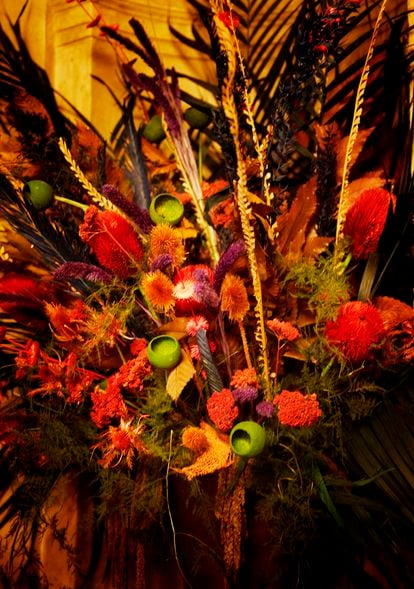
About the meeting with Sacko he says: “I admire Mory, his cooking, his identity and his values. When restoring this historic maison I thought that a French chef like him, with his origins, would interpret better than anyone else the frontier concept of French cuisine and could represent in his dishes Lafayette's stays in the United States, making this a place unlike anything else.” .
For Patou, what differentiates a restaurant is the souffle, the ambition. “If I were a tourist I would be overwhelmed by this beauty. Here you can access Mory's signature at a good price. This is brasserie, this is cool, festival, cocktail, tac-tac, music… La Fayette had a vision and convictions, he was a defender of freedom. He is a symbol. And in life symbols are very important.”
Subscribe to continue reading
Read without limits
_
#Mory #Sacko #cuisine #reflection #French #society
